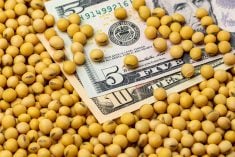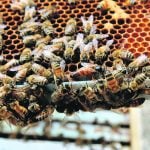Rising corn futures, European economic turmoil and passive consumption patterns have strained feeder prices. Cattle futures dropped faster than a power window last week, with traders squealing about changing market conditions.
It was not long ago that upside was unlimited and the world would run out of beef. My brother sold backgrounded heifers last week and stated that he suffered "leg amputation without anesthetic." Seasonal patterns are as regular as the changing of the guard and this year is no exception.
Most auction markets are experiencing sharply lower volumes while the internet sales continue to sell regular numbers. A small mixed group of cross feeder steers averaging 685 pounds sold for $158 per hundredweight (cwt) in west-central Alberta, which was considered exceptional value. Holidays have started early for some buyers and lack of participation results in opportunities. Steers weighing 800 to 900 lbs. sold in the range of $140-$150/cwt just south of Edmonton. Fed cattle prices were viewed as lethargic, with Alberta packers buying steers at $109/cwt.
Read Also

China rapeseed meal futures see largest one-day gain in almost three months after Xi–Carney talks
China’s most active Zhengzhou rapeseed (canola) meal futures posted their largest daily gain in nearly three months on Monday, after Canadian Prime Minister Mark Carney and Chinese President Xi Jinping met in South Korea last week without securing a breakthrough on tariffs.
Corn crop conditions continue to deteriorate under the brutal heat wave blasting the U.S. Midwest region. Weekly ratings are lower than last year and many analysts are now factoring yields similar to lower than 2011. The 10-day forecast calls for similar conditions and the crop has a long way to go before combines start rolling.
World barley conditions are also unclear; barley exports from Russia and Ukraine will shrink, causing major buyers such as Saudi Arabia and Morocco to shop Canadian-origin. A non-monopolistic export environment could drain supplies from the domestic market. This is absolutely devastating for the feeder cattle complex. What is the right price for feeders when input costs are so erratic?
North American consumers are disgusted with the Greece and European fiasco. The Marshall plan ended long ago but they still feel the U.S. and Canada should hand over cold hard cash. The media hype and fear have tempered consumer spending, causing beef consumption to ease like a tranquilized elephant. Consumer spending patterns operates in wave cycles and after a robust spring, it takes time to rebuild the savings account.
— Jerry Klassen is a commodity market analyst in Winnipeg and maintains an interest in the family feedlot in southern Alberta. He writes an in-depth biweekly commentary, Canadian Feedlot and Cattle Market Analysis, for feedlot operators in Canada. He can be reached by email at [email protected] for questions or comments.












